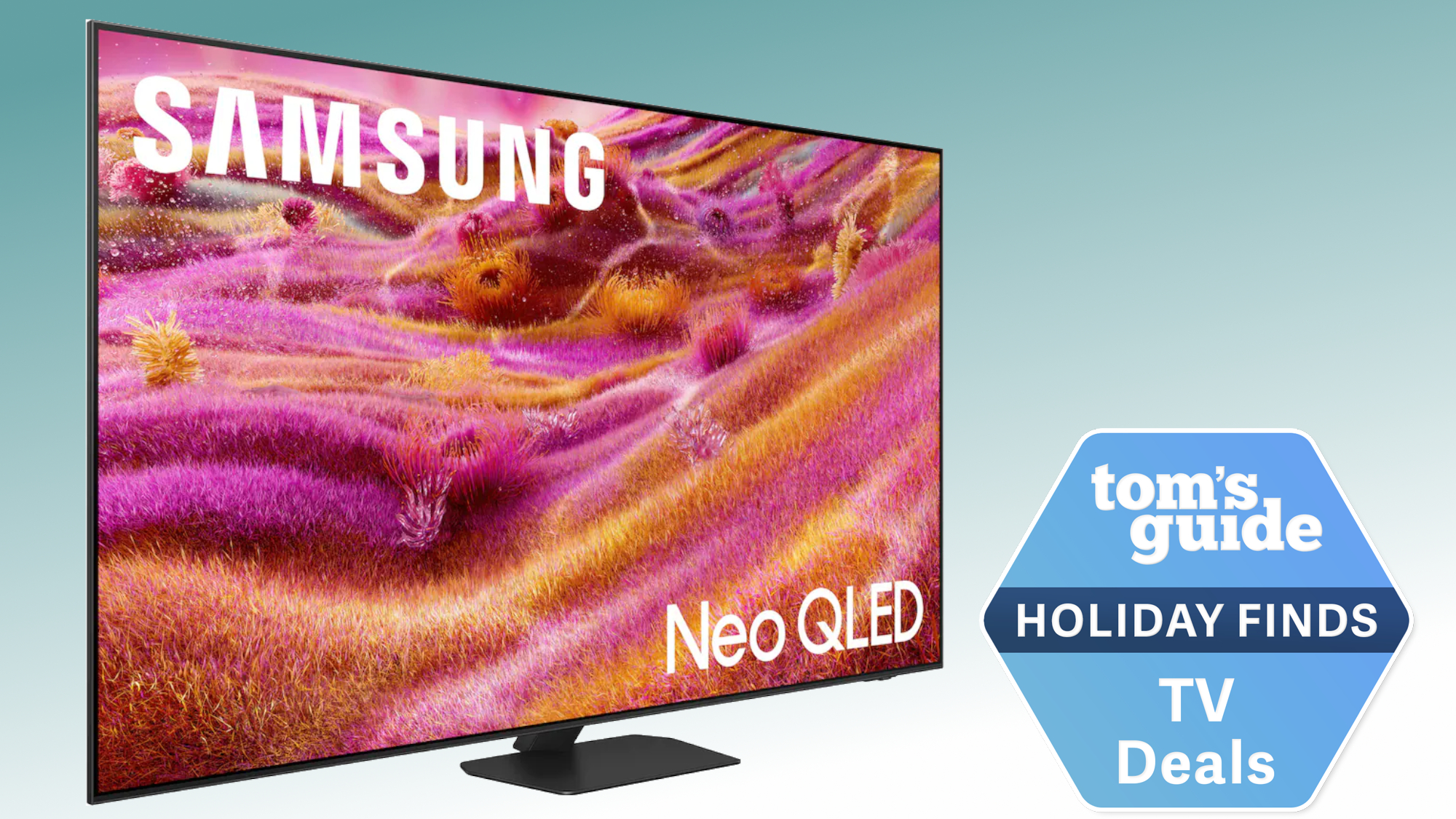Tom's Guide Verdict
Amazing in every way, and a feast for your eyes and ears alike, the Sony Bravia XR A95K OLED is as good as TVs get.
Pros
- +
Superb picture quality
- +
Color and brightness are outstanding, especially in HDR
- +
Some of the best sound you can find from a TV
- +
Includes a dizzying variety of useful, experience-enhancing features
Cons
- -
Only two HDMI 2.1 ports
- -
Not the lowest input lag you can find
Why you can trust Tom's Guide
Price: $2,999
Screen size: 65 inches
Model: XR-65A95K
Resolution: 3,840x2,160
HDR: HDR10, HLG, Dolby Vision
Refresh Rate: 120 Hz
Ports: 2 HDMI 2.1, 2 HDMI 2.0, 2 USB
Audio: 60W
Smart TV Software: Google TV
Size (without stand): 56.88x33x1.75 inches
Weight (without stand): 59.5 lbs.
By any standard, the Sony Bravia XR A95K OLED is a remarkable TV — and often, it’s far better than that. This set, which sits at the top of Sony’s expansive TV lineup, unites the industry’s defining technologies and Sony’s own groundbreaking processing and picture enhancements to deliver superlative performance in every area. And our own test results back this up.
The color and brightness on the Bravia XR A95K are dazzling. Unexpected but genuinely useful smart features transform everything from how you interact with the screen, how you make picture adjustments, and even what you do if you lose your remote control. Perhaps most important, this Sony OLED TV looks and sounds like a dream, no matter what you watch on it, making everything a transcendent viewing and listening experience.
The question with the A95K, then, isn’t whether it’s one of the best TVs you can buy. It’s whether it is the best TV you can buy.
Sony Bravia XR A95K OLED review: Pricing and availability
As Sony’s flagship 4K OLED TV, the A95K does not come cheap. There are only two models in this family, the 65-inch version of which is the one we evaluated (though we expect the smaller model to perform similarly):
- Sony Bravia XR-55A95K OLED TV: $2,499.99
- Sony Bravia XR-65A95K OLED TV: $2,999.99
If neither of these is exactly what you’re looking for, other Sony TV lines do offer larger and smaller screen sizes.
Sony Bravia XR A95K OLED review: Design
Like most other TVs out there, the A95K aims for the maximum amount of screen and the minimum amount of bezel possible. Outlining the jet-black display on all sides is a metal bezel only one-sixteenth of an inch thick, though there’s an added 0.75-inch band along the bottom for displaying the power light and, on the far left, a nearly imperceptible Sony logo. The screen is thicker than on most recent OLED sets (about 0.5 inch), but the size of the set itself (56.88x33x1.75 inches) ensures it makes a statement from any angle. That includes the back, with the rear panel protruding another inch and cut with a dynamic square pattern that emphasizes every departure, including the 300x300mm VESA mounting holes should you want to put the TV on a wall.

Choose not to wall-mount it, however, and the A95K becomes a distinctive piece of your living room. Its single-piece stand is a heavy, arc-shaped piece of metal as long as the TV and about 10.8 inches deep. To install it, you screw the two included supports onto the stand, then screw the TV into the supports. The process is somewhat cumbersome — and not practical to do alone — but there’s no question that it’s sturdy. It ups the style quotient, too: The TV may be connected to the stand so the foot is either visible from the front (and the set may stand flat against a wall) or not (so you don’t have to see it). The latter is more inherently attractive, but I preferred the overall leaner look of the former.
Get instant access to breaking news, the hottest reviews, great deals and helpful tips.
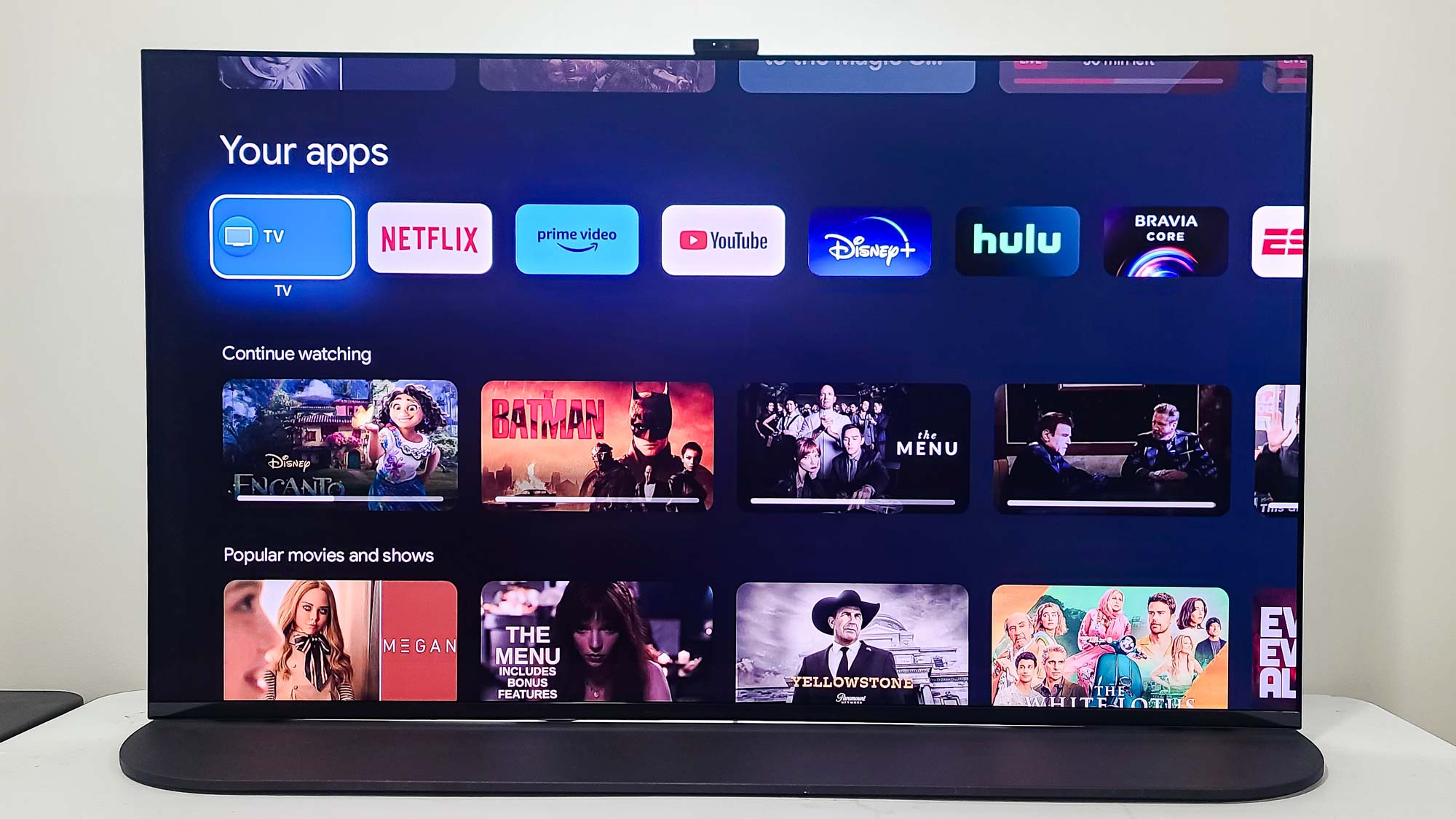
The power cable connects to the right side of the TV, and all the other ports are on the left. These include a coaxial cable connector, an Ethernet jack, an S/PDIF port for digital audio, an RS-232 connector, two USB ports (one maxing out at 500mA, one at 900mA), center speaker and remote IR inputs, red and black speaker terminals, and four HDMI ports.
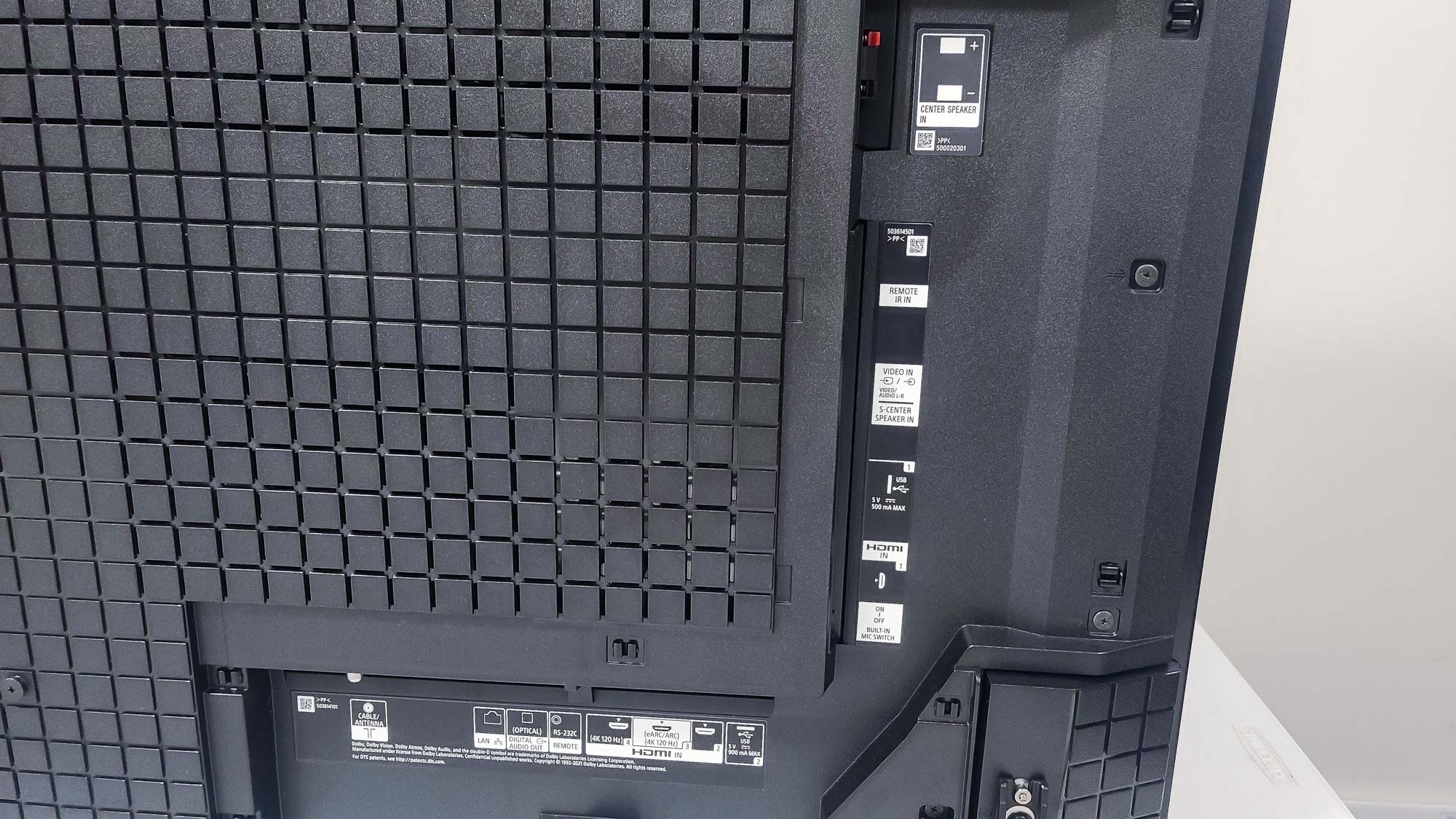
Of those, only two support the newer HDMI 2.1 standard and thus 4K 120Hz. As it’s not uncommon to see even lower-priced TVs with all HDMI 2.1 ports, this is a little disappointing. There is also a switch for enabling or disabling the integrated far-field microphone for controlling the TV with your voice.
Sony Bravia XR A95K OLED review: Test results
| Sony Bravia A95K OLED | Samsung S95B OLED | LG C2 OLED | |
| Input Lag (ms) | 16.1 | 9.2 | 12.9 |
| SDR Brightness (Window 10%, in nits) | 296.6708 | 329.4563 | 228.2797 |
| Delta-E (lower is better) | 3.3223 | 3.0184 | 1.7009 |
| HDR Peak Luminance (Window 10%, in nits) | 1041.8908 | 1011 | 800.14 |
| UHDA-P3 Color Gamut | 99.95% | 98.44% | 99.02% |
| BT.2020 Color Gamut | 89.7% | 76.67% | 74.17% |
Being one of the new breed of QD-OLED TVs combining quantum dot and OLED, the A95K promises the “widest range of OLED colors ever” alongside superior brightness, the infinite contrast levels OLED affords, and best-in-class smarts thanks to its Cognitive Processor XR engine (which we first examined on the 2021 A80J model). To see how well the A95K lived up to these claims, we subjected it to our usual battery of performance tests using an X-Rite i1 Pro spectrophotometer, a SpectraCal VideoForge Pro pattern generator, and Portrait Displays’ Calman calibration software.
In our SDR tests, the A95K hovered around just under 300 nits of brightness (276 nits in its Standard picture mode, 297 nits in Custom, the closest to out-of-the-box calibration quality) — not objectively high, but good for OLEDs. As far as color reproduction, its best result was a Delta-E value (representing the difference in color between the source and what’s displayed on the screen, with lower numbers being better) of 3.3223 in Custom; that’s low, but we’ve seen plenty of other sets that were lower. (The LG C2, one of the best TVs Tom’s Guide reviewed last year, managed 1.7009 in its best picture mode.) The Sony’s coverage of the Rec. 709 color gamut was startling: 110.8% in Custom (second only to the LG B2, with 130.5%) and 151.8% in Standard, which is by far the highest we’ve seen.
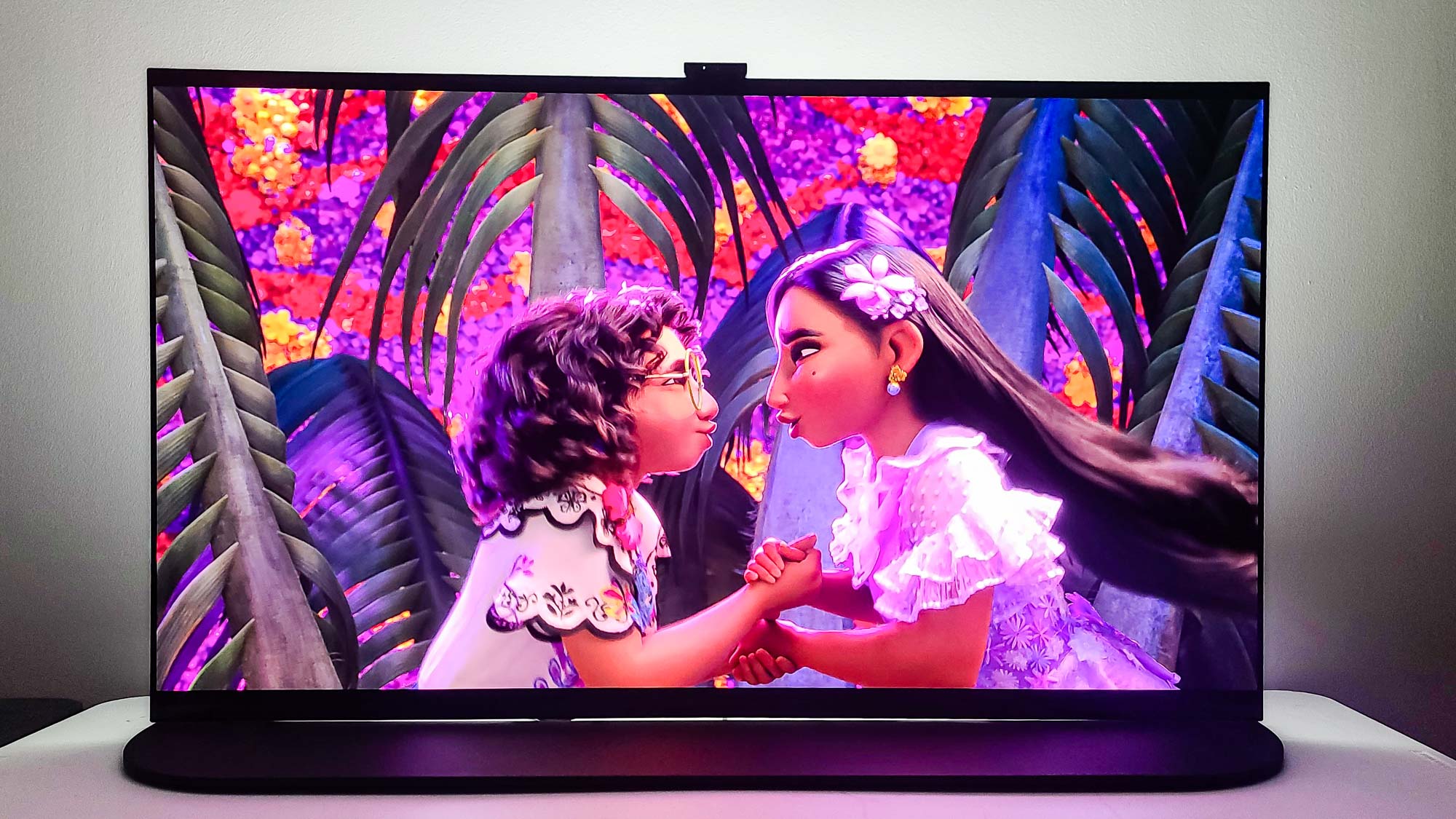
If you’re thinking that all those colors with SDR suggest even more mind-blowing results with HDR, you would be correct. With its peak brightness hovering around 1,000 nits in as much as 25% of the picture, it’s definitely one of the brighter sets we’ve seen — only the Samsung QN95B and the Hisense 65U8H get consistently higher.
The A95K’s HDR color, however, was truly astounding. That it covered 99.95% of the UHDA-P3 color gamut in every mode, making it the unalloyed best we’ve tested there — the runner-up is the Samsung S95B, with 99.76% in its Filmmaker Mode — isn’t even the biggest news. It covered 89.44% of the even wider BT.2020 gamut, something no other set we’ve encountered has matched. The “closest” is the 50-inch Vizio M-Series Quantum X, which covered a relatively paltry 81.61%.
In the end, the A95K isn’t just first-rate today — it’s also sufficiently future-proof that you won’t need to worry about how it will handle next-generation content when it becomes more prevalent in the market (as will likely happen in the next few years).
Sony Bravia XR A95K OLED review: Performance
Unfortunately, there’s not much to say about the A95K’s picture quality in real-world terms.
Because it’s extraordinary.
Every movie I watched was the best version of it I’d ever seen. Top Gun: Maverick soared with excitement, capturing functionally all of the movie’s effects and spine-tingling aerial action with the same electricity it did on the IMAX theater screen. Denis Villeneuve’s Dune was realistic to the point of its desert scenes being asthma-inducing, with the tan and gray color palettes of Arrakis etched against the planet’s blinding white sky, and the picture quality so crystalline, you could make out individual grains of sand and spice.

Spider-Man: No Way Home was exciting and fiery in the seamless relationship of its special effects to its live-action shots — so much so, it almost looked better than it did in the theater.
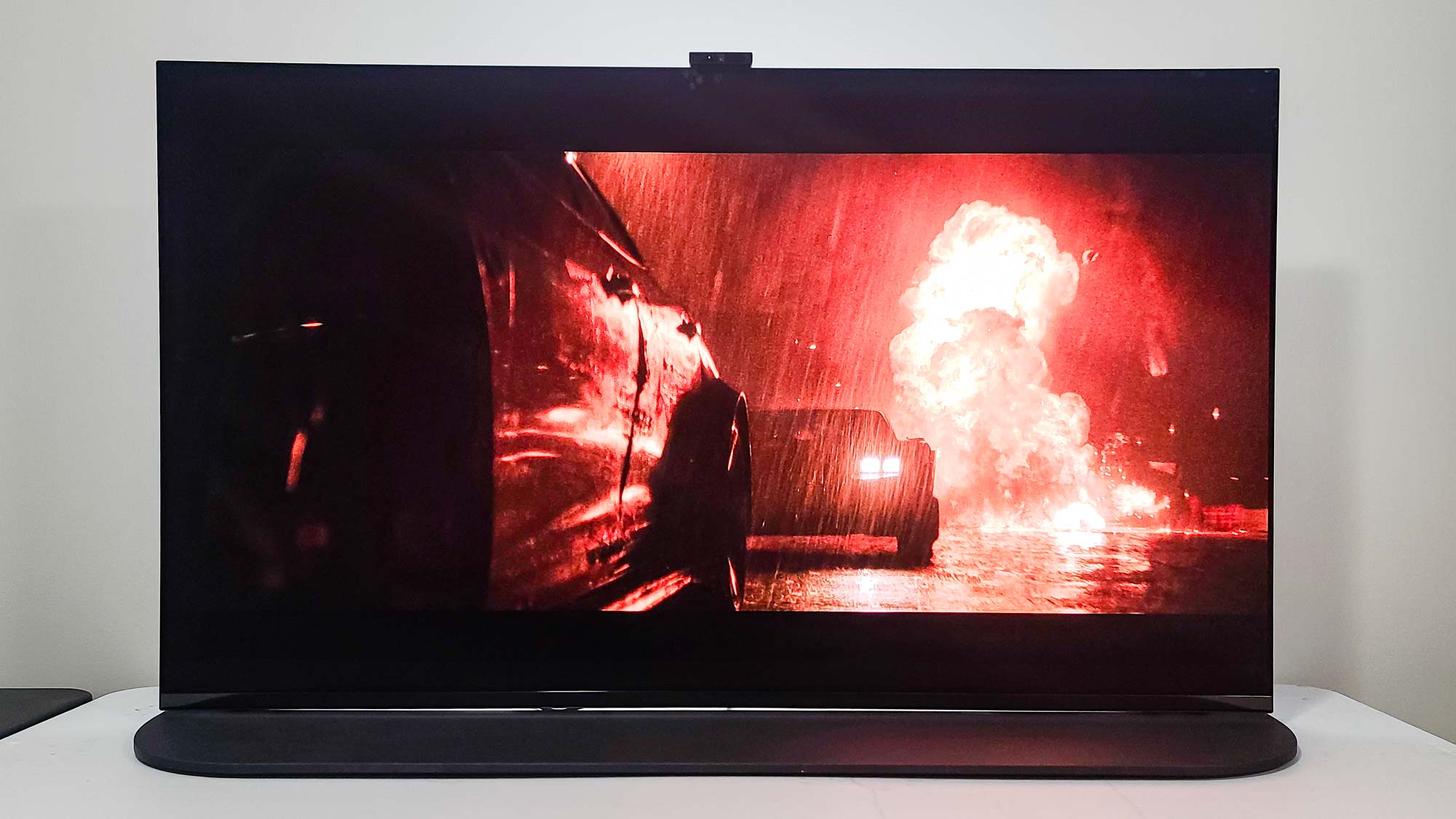
Every drop the edginess of The Batman’s on-the-brink Gotham City oozed from the screen, with even deep blacks perfectly contrasted against blazing brights. Disney’s Encanto has never looked more magical, the floral colors of its supersaturated Columbia flawlessly rendered. Upscaled from 1080p, Mission: Impossible – Fallout was barely distinguishable from its native 4K version. A punishing 4K test pattern designed to pinpoint even the slightest flaws in a screen revealed no observable mistakes. And thanks to the OLED panel, the display loses next to none of its quality when viewed from even extreme angles.

The closest I can come to a criticism of the A95K’s picture quality is that its Vivid picture mode makes everything viewed with it look sickly. But as this is a common problem with such modes, even that’s barely a knock. Picture-wise, this is an incredible — and borderline incomparable — TV.
Sony Bravia XR A95K OLED review: Audio
It’s common for TV reviews to rhapsodize about how good the set looks and then go on to complain about how poor it sounds. Given the general state of TV audio, that’s understandable, but that doesn’t even apply to the A95K.
Don’t get me wrong: You’re not going to mistake this set’s audio for what you’d get with a full A/V system, or maybe even one of the best soundbars you can buy. TVs, these days being something like 90% flat screens with a little bit of additional hardware mixed in, can do so much.
Even so, the A95K — with sound hardware comprising two 20W actuators and two 10W subwoofers, the Cognitive Processor XR chip, and the utilization of Sony’s Acoustic Surface Audio+ technology to turn the screen itself into a speaker—pushes the limits.
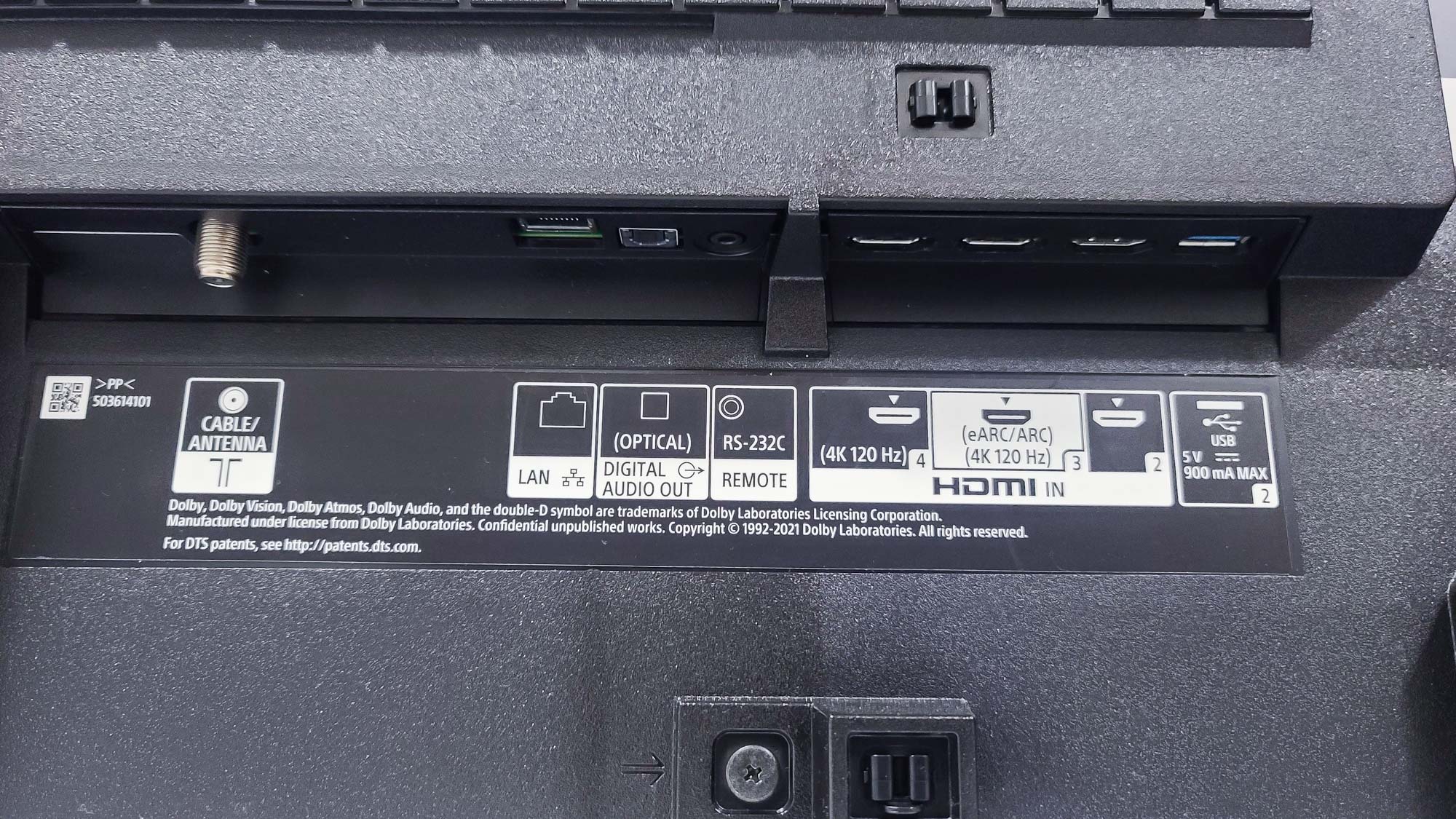
The Knife’s “Silent Shout,” which usually highlights any set’s inability to cope with bass, came across in all its chest-resonating glory here, and maintained that booming clarity even at the set’s highest volume levels, which stop just short of being wall-shaking. A soprano vocal track I use to test the other extreme was rich and full throughout, with the sustained B-flat it crests to as affecting as if you were sitting in the front row of the Metropolitan Opera.
Action scenes in Top Gun: Maverick layering dialogue, music, and sound effects thrilled in multiple dimensions. Straight dialogue scenes in other movies and the musical numbers in Encanto were no less fully realized. Could you, by spending still more money, make the A95K sound even better? Sure. But this is one of those rare TVs where no one but the hardest-core audiophiles will see any need to bother.
Sony Bravia XR A95K OLED review: Gaming
If there’s one area where the A95K doesn’t quite rule the roost, it’s dealing with input lag. Make no mistake: Its time of 16.2ms (as measured with a Leo Bodnar lag tester) is quite good, firmly below our 20ms threshold for a satisfying gaming experience. But we’d hope that a top-of-the-line Sony like this one could get the time down to (or maybe even below?) our 10ms threshold of excellence, as is now the rule rather than the exception with Samsung’s newest sets.
But none of this is to say that the A95K isn’t excellent at gaming, too. If you hook up your console to one of the 120Hz HDMI 2.1 ports, you get all the associated benefits, including Variable Refresh Rate (VRR) and Auto Low Latency Mode (ALLM). Because this is Sony we’re talking about here, if that console is a PlayStation 5, you also get Auto HDR Tone Mapping for still better picture quality and Auto Genre Picture Mode, what Sony calls “a more sophisticated version” of ALLM designed for non-gaming applications.
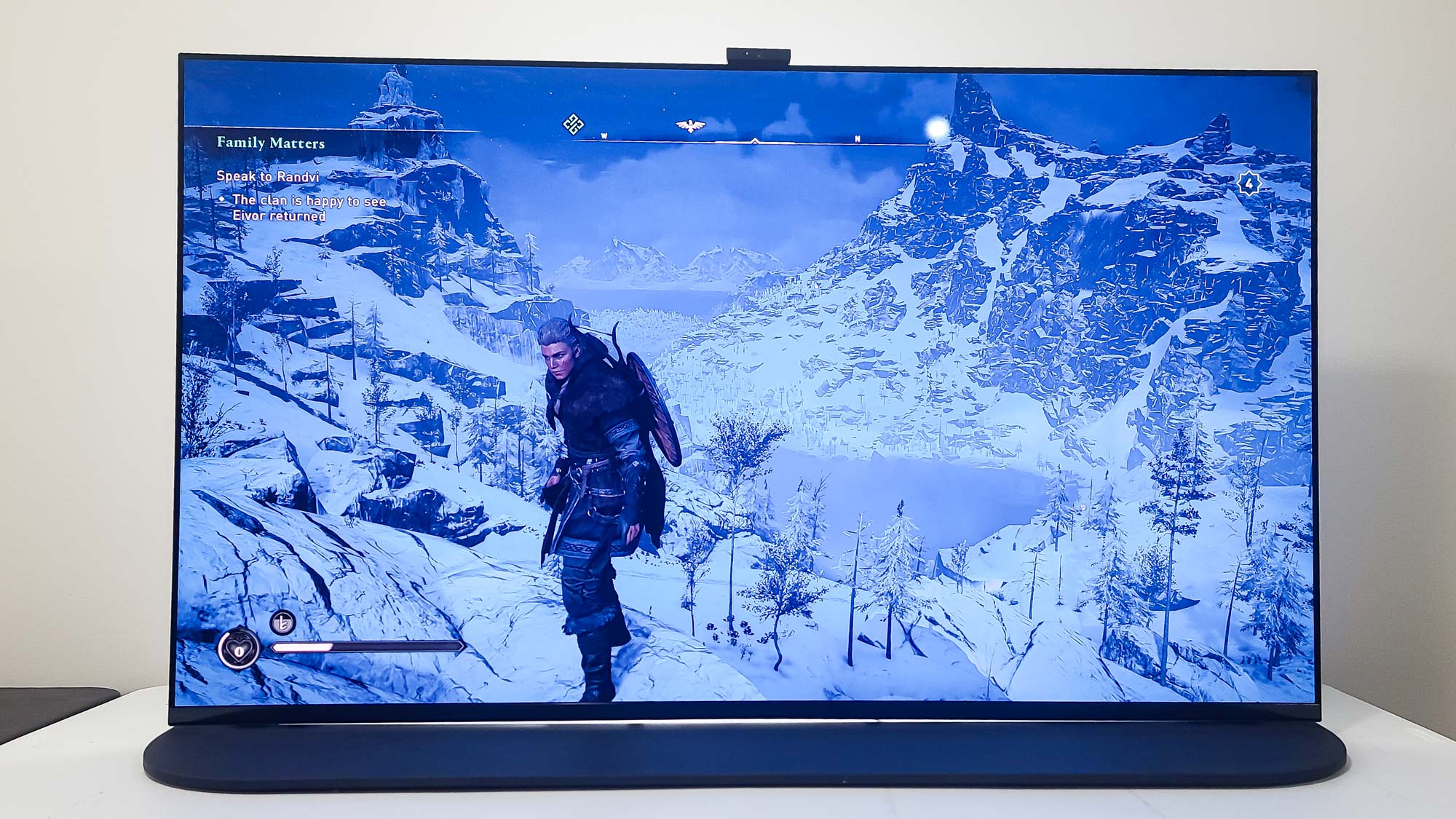
Like a lot of people, I’ve spent an embarrassing amount of time playing Elden Ring, but I’ve never been more captivated by my journeys throughout the Lands Between than I was playing it on the PS5 on the A95K — the graphics were pristine and the action maddeningly responsive in all the best ways. I had just as good a time on “just” an Xbox Series X, with the snow-choked landscapes of Assassin’s Creed Valhalla coming alive as they never had before.
Sony Bravia XR A95K OLED review: Smart TV interface and features
Google TV is in serious competition for the simplest, cleanest, and richest smart TV interface, and it’s right at home on A95K. Simple and quick to navigate, easy to search, and adept at presenting plenty of new and recent options without overwhelming, it makes finding and watching movies, TV shows, and anything else a breeze.

It surfaces major titles right at eye level, arrays your apps below that, then lists your “Continued Watching” titles — you never have to see anything more if you don’t want. Links for Search, Live, Movies, Shows, Apps, your personal Library, and dedicated Sony offerings line the top of the screen. And Google TV’s seamless integration with Google Assistant helps still more, letting you search for things as easily on the TV as you would your phone or computer.

One perk of the A95K is a two-year membership in Bravia Core, Sony’s proprietary streaming service, along with 10 movies to redeem. It’s a mixed blessing. Bravia Core is, like all of the manufacturers’ services, unnecessary given how much else there is out there to watch, and most of its catalog isn’t inspiring. (The most prominent recent titles I noticed included Ghostbusters: Afterlife, The Woman King, Uncharted, and Morphius, if that gives you an idea.) But it does stream in 4K at 80Mbps, so it may be worth it to you.
A more striking extra you get with the A95K is the Bravia Cam. A tiny camera that attaches to a port on the rear panel and sits atop your TV, it opens the door to lots of new, next-level possibilities. It works with the TV to adjust color, brightness, and even sound on the fly depending on conditions in the room at that moment (including the number of people and where they’re sitting). You can use it for video chatting on a screen much bigger than your laptop’s. It even has a clever form of parental controls that can prevent anyone from sitting too close to the screen. (And don’t worry: There’s an integrated sliding lens cover should you ever decide you want privacy.)
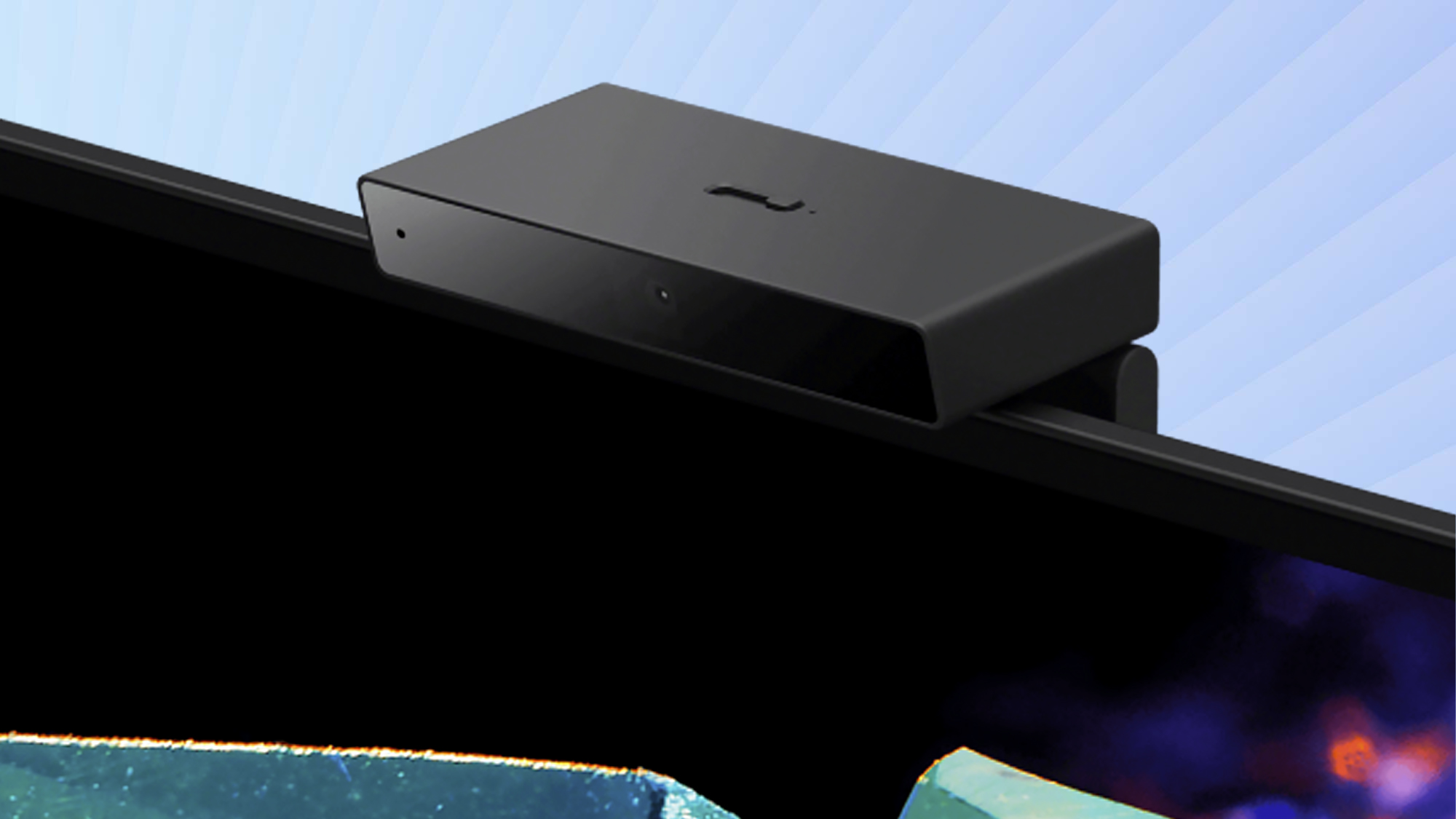
Most compelling about the Bravia Cam are its gestures, so you can control key TV functions without needing the remote. All you do is raise your hand to catch the camera’s “eye,” then move it up, down, left, or right to select something from the menu that appears on screen. The exact choices depend on what you’re doing, but they can include adjusting the volume, changing the channel, or playing or pausing a video; a closed fist turns off the power (clever); and you can use your index finger to move to another music track or fast-forward or rewind.
The gestures are fun, and they worked every time I tried them, but I found them to be more trouble than they’re worth. The camera’s range and speed are limited by the room’s brightness, and a dark room is usually what I want when I’m watching TV. They are also a bit on the slow side, taking a few seconds to register, though you can change a setting to prioritize speed rather than accuracy. Call me old-fashioned, but I find it much easier to just use the remote.
Sony Bravia XR A95K OLED review: Remote
I was a big fan of the previous Sony remote, which for my money was one of the best bundled remotes out there, but the new version is even better. All of Sony’s most recent sets have it: It measures 6.9 inches long and just under 1.5 inches wide, shorter and narrower than its all-black predecessor, but has lost little key functionality. Gone are the number pad, the color buttons, and a few specialized controls (such as for Jump, Subtitle, Record, and Fast Forward and Rewind), and everything else has been rearranged to make better use of space.

The Power, TV, Settings, Input, and number buttons are all in the top section, above the directional pad; Back and Home are conveniently located just below that. Then there’s the Google Assistant button; Volume, Channel, and Mute controls; and Play, Pause, and Guide. Finally are four shortcut buttons for Netflix, Disney+, Amazon Prime Video, and Bravia Core.
That last button is replaced on other models’ remotes with a button for YouTube, but that’s not the only difference. As part of the Master Series, the A95K needs to stand out, so its remote is gunmetal gray rather than black; all of its keys are backlighted for easy use in the dark; and, should you lose it, just say “Hey Google! Find my remote!” to get help tracking it down.
Sony Bravia XR A95K OLED review: Verdict
Sony has outdone itself with the Bravia XR A95K. The company has taken its previously towering picture-enhancement technologies and supercharged them. Sound, color, speed, interface — you name it, the A95K has it. And whatever you want to do, this TV excels at it.
The LG C2 comes close to it as far as features (and may surpass it for gaming) and the Samsung QN95B’s brightness is truly a sight to behold. But I’m not convinced either beats the A95K as a package deal. Its picture quality is fantastic now and only likely to get better as Rec. 2020 gains ground, its sound is the next best thing to being there, and it is so loaded with intuitive and forward-thinking capabilities that just turning it on is like careening into the future.
I’ve been in this business for a long time, and I’ve been working with TVs for years, so I do not impress easily. But never in all that time have I encountered a TV I found myself wanting to watch more than the Sony Bravia XR A95K. It really is that good.
Matthew Murray is the head of testing for Future, coordinating and conducting product testing at Tom’s Guide and other Future publications. He has previously covered technology and performance arts for multiple publications, edited numerous books, and worked as a theatre critic for more than 16 years.


